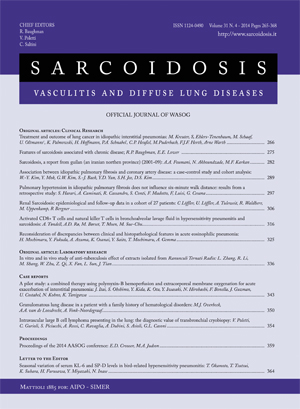Reconsideration of discrepancies between clinical and histopathological features in acute eosinophilic pneumonia
Main Article Content
Keywords
Abstract
(Background and objectives) Acute eosinophilic pneumonia (AEP) is a very rare condition, with only one paper published so far discussing histopathological findings at surgical biopsy. In that paper, AEP is considered to be an acute and proliferative stage of DAD accompanied by eosinophilia. However, acute respiratory distress syndrome, acute interstitial pneumonia, and acute exacerbation of idiopathic pulmonary fibrosis, which, unlike AEP are mostly life-threatening diseases, also exhibit DAD. AEP also presents with severe hypoxia but rapidly improves on treatment with corticosteroids alone, without subsequent fibrosis. In contrast, the other above-mentioned diseases with the same histopathology show greatly different clinical courses. The reasons for these differences remain unclear.
(Methods) Here we investigated the histopathology of AEP in 2 surgical lung biopsy and 14 transbronchial lung biopsy cases. Additionally, we determined the presence or absence of different phases of DAD by histopathology in these AEP cases.
(Results and Conclusion) Characteristic histopathological findings of AEP consist of alveolar edema with infiltration of eosinophils and lymphocytes and edema of perivascular area and interlobular septa. The alveolar spaces showed fibrinous exudates. There were no hyaline membranes or massive intraluminal fibrosis. These histopathological findings of interstitial edema and fluid exudates are consistent with radiological findings of lung edema and can explain the rapid and complete improvement.
Because AEP does not exhibit lung fibrosis histopathologically, it should not to be included in DAD which is associated with lung fibrosis.


